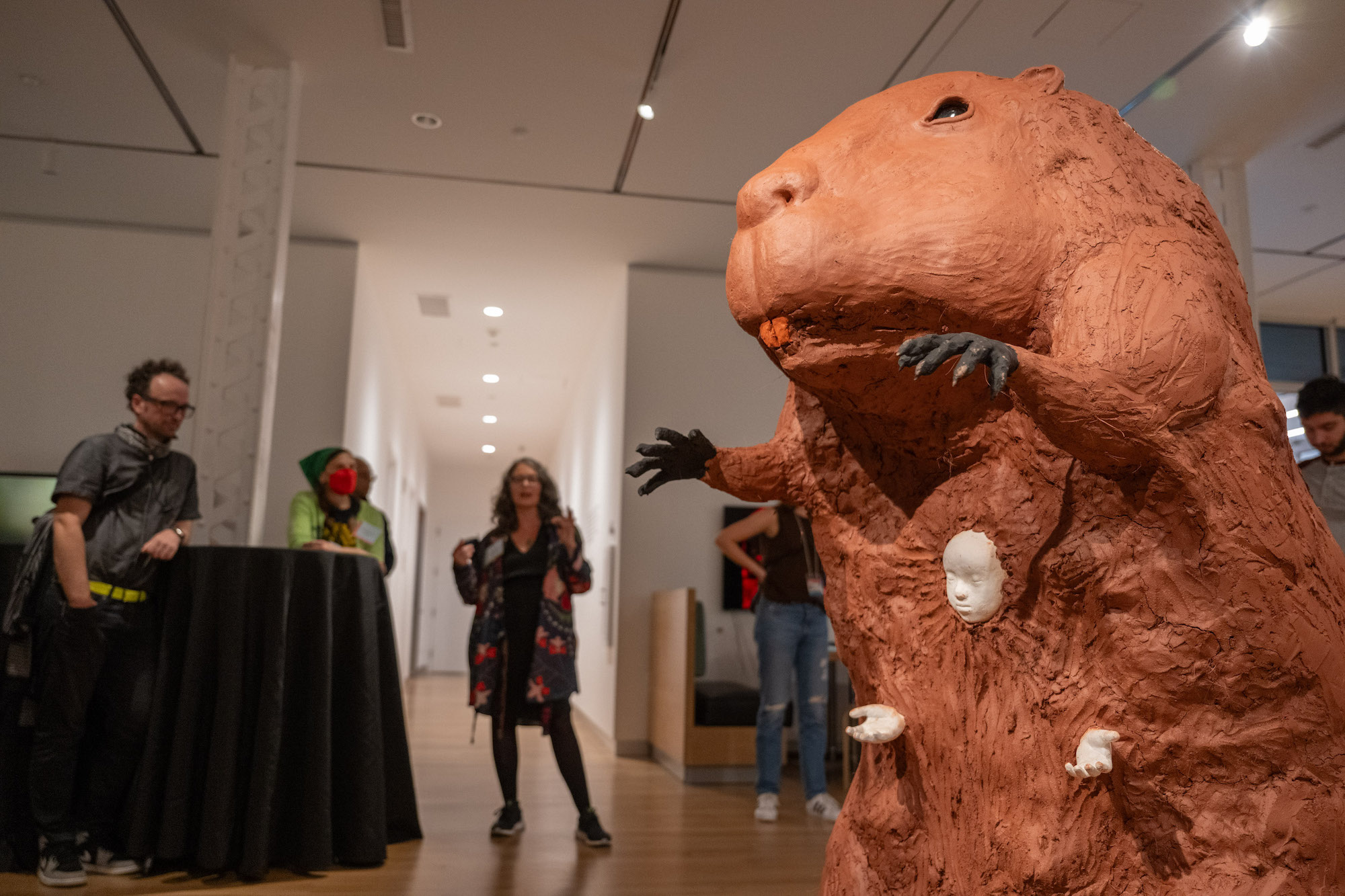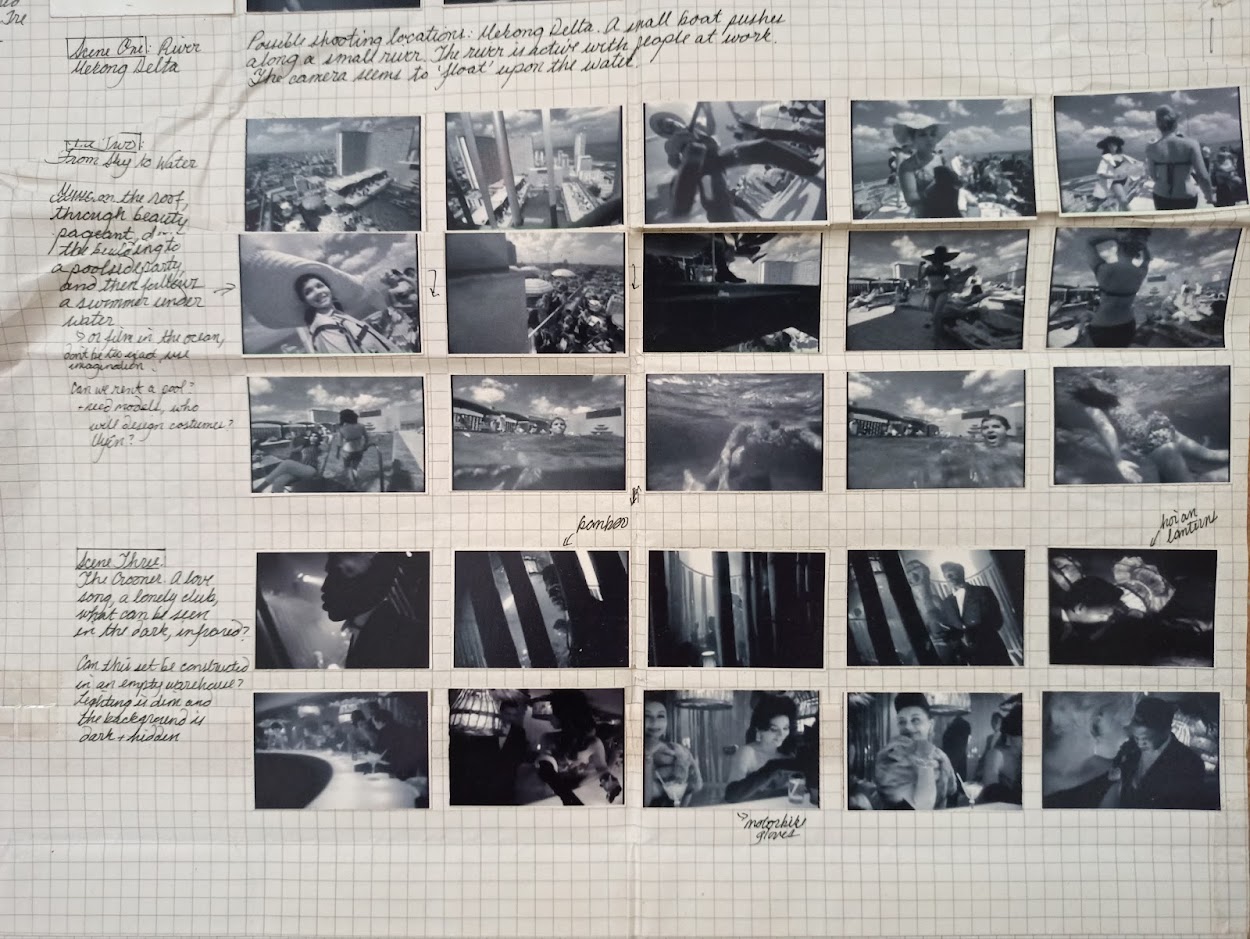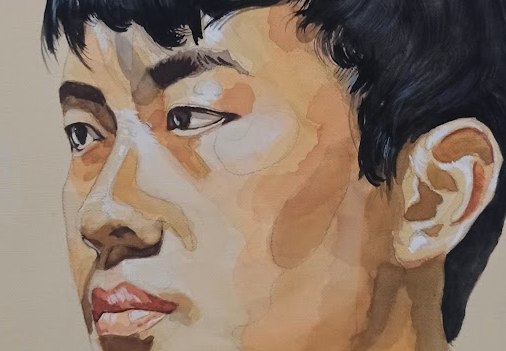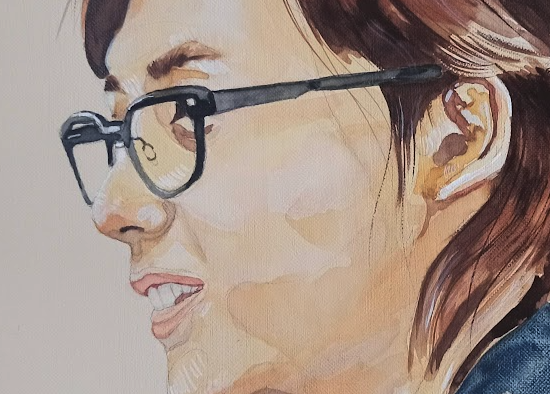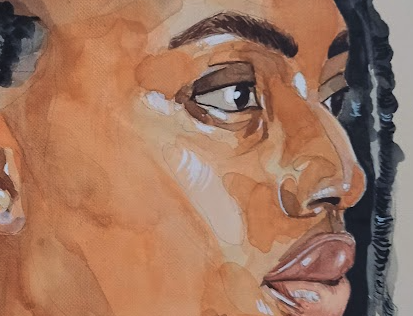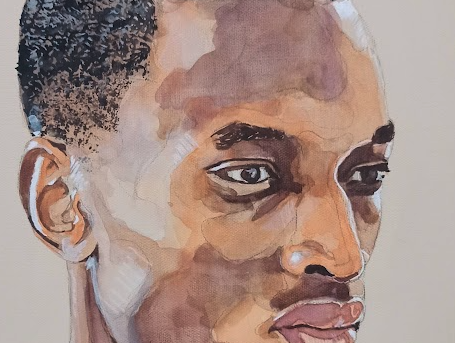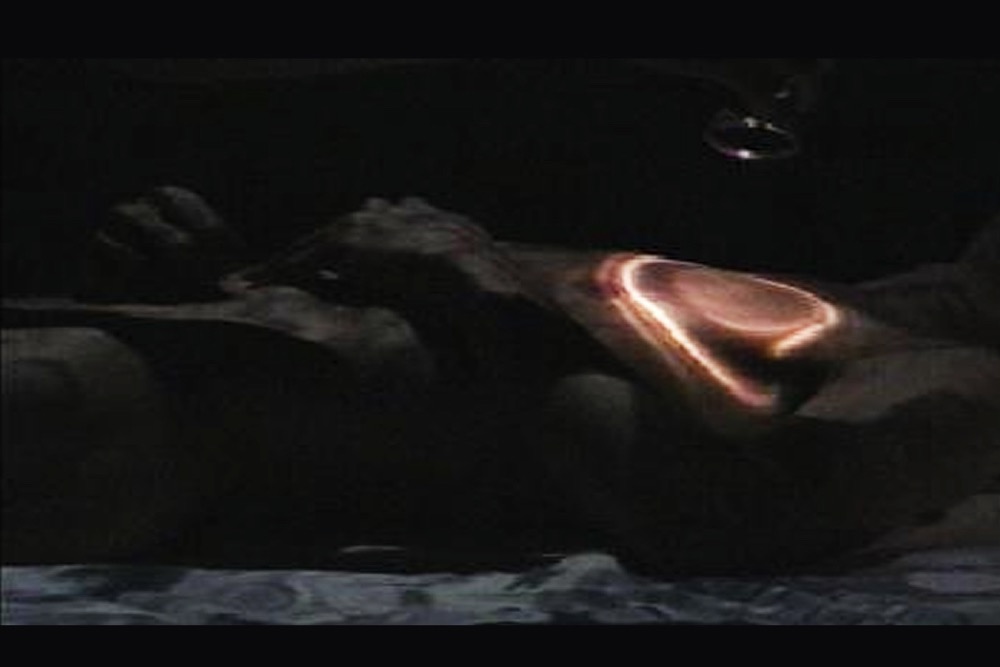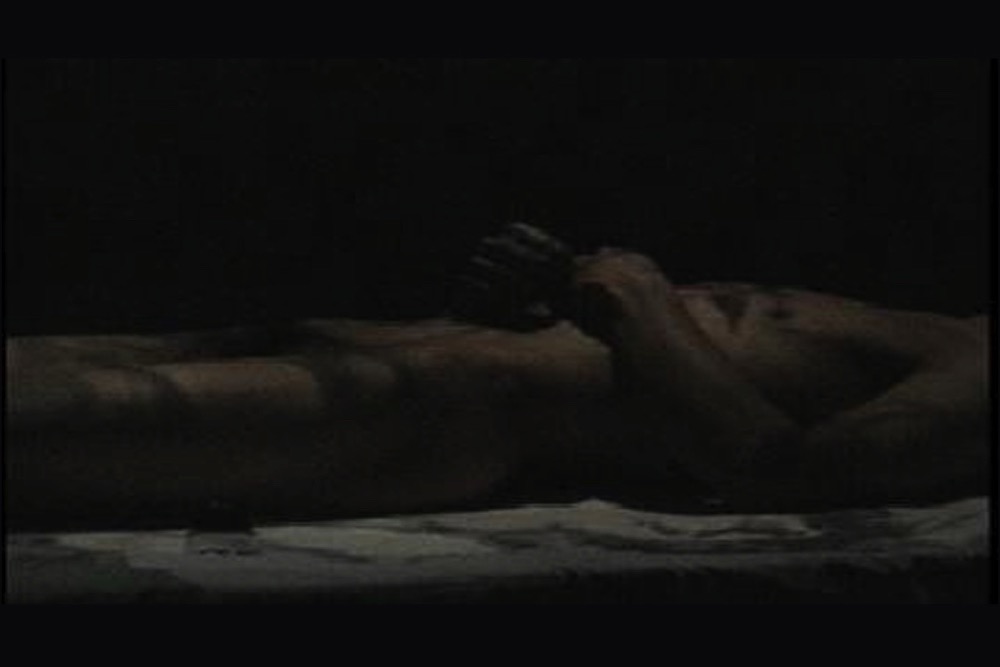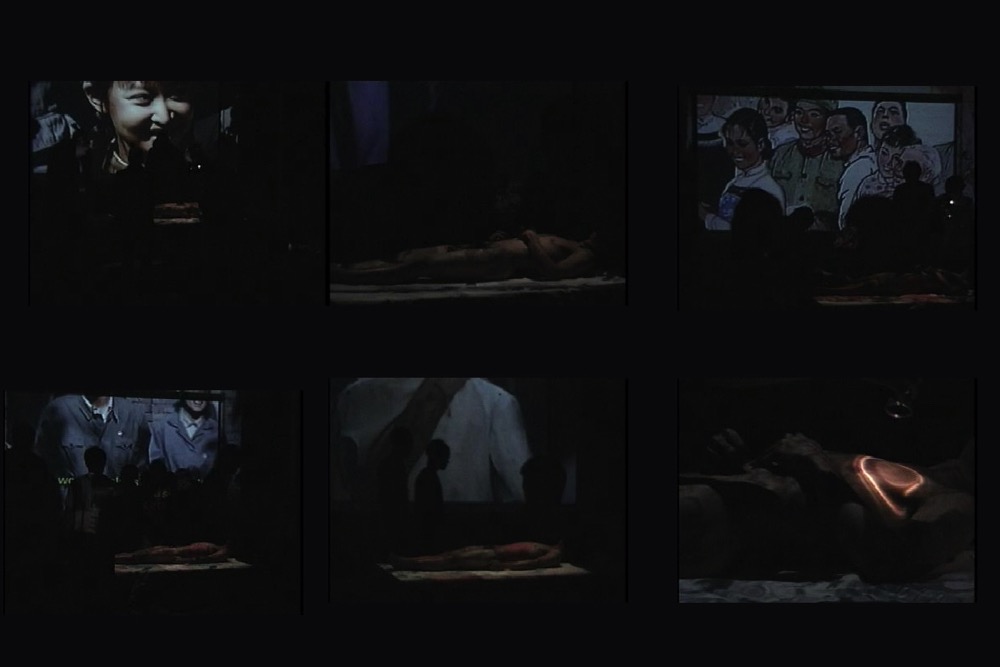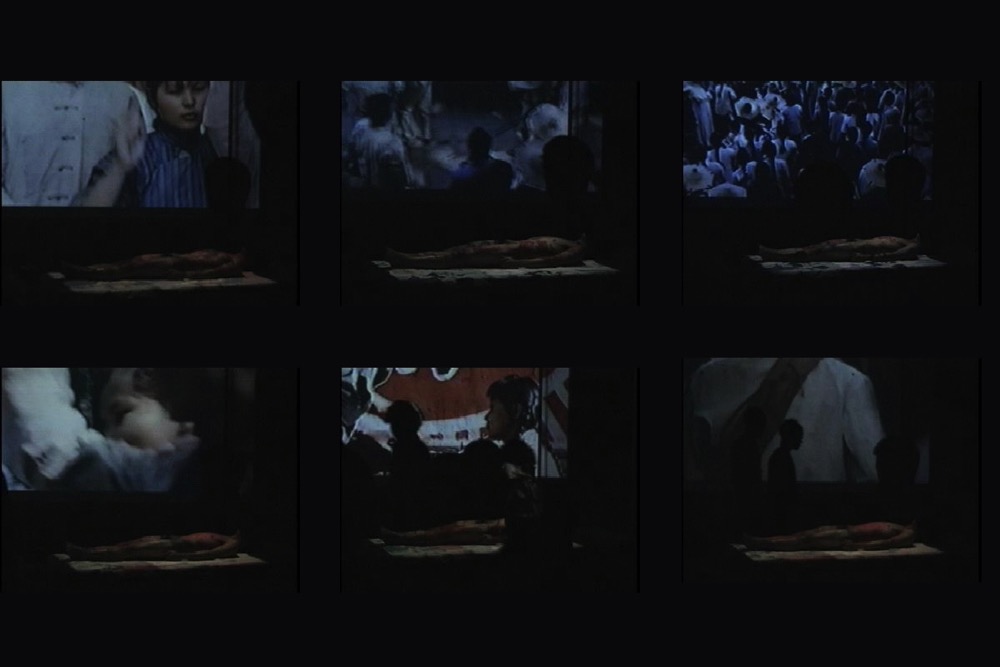Topology/Topography: Issues in surveillance spaces (2001)
THE PERFORMANCE
This performance was conceived, in part, as a reaction to the April 1, 2001 US spyplane incident above China which saw the plane grounded and under control of Chinese authorities on Hainan island. The performance questions distances of discomfort and how these distances relate to surveillance and the relationships between body and notions of nation and sovreignty.
Two ceiling-mounted video projectors display images from above onto the nude body lying prone upon a table below. At the foot of the table, instruments of inspection and surveillance are placed. These include video cameras, binoculars, photo loupes, stethosocopes, flash lights, latex gloves, and tape recorders. Marked and drawn upon the body with ink is a generic topography- lines of elevation and text. Throughout the performance, the audience is invited to inspect, survey and record the body with the array of devices.
The body as serves both as the distanced anonymous surveilled landscape and intimately as belonging to an individual vulnerable to the probings of the surveyor. Another projector displays images of chinese communist propaganda, video footage from chinese movies popular with American audiences, and satellite surveillance imagery taken during the spyplane incident to a screen located on the rear wall. The projections contrast stereotypical notions about who the Chinese people are, allowing us to remain voyeurs, remote, unattached, and entertained. The juxtaposition of the present body forces us to confront the existence of the real (as opposed to the constructed) and to question our responsibility and culpability as passive consuming voyeurs. The performance ends when footage ends (approximately 20 minutes).
THE TEXT
"The moment they appeared on the scene, the first optical device (Al-Hasan ibn al-Haitam aka Alhazen's camera obscura in the tenth century, Roger Bacon's instruments in the thirteenth, the increasing number of visual prostheses, lenses, astronomic telescopes and so on from the Renaissance on) profoundly altered the contexts in which mental images were topographically stored and received, the imperative to re-present oneself, the imaging of the imagination which was such a great help in mathematics according to Descartes and which he considered a veritable part of the body, veram partem corporis." Just when we were apparently procuring the means to see further and better the unseen of the universe, we were about to lose what little power of imagining it. The telescope, the epitome of the visual prosthesis, projected an image of a world beyond our reach and thus another way of moving about in the world, the logistics of perception inaugurating an unknown conveyance of sight that produced a telescoping of near and far, a phenomenon of acceleration obliterating our experience of distances and dimensions."
Virillio, Paul. The Vision Machine. Bloomington: Indian University Press, 1994.
AFTERNOTE:
Although this event has been forshadowed by the events of September 11, it remains an issue very much in contention. It is interesting, however, that the Chinese now take a very different approach, now remaining more subdued than dramatic. On January 19, 2002, it was reported that the United States retrofitted Chinese President Jiang Zemin's Boeing with an assortment of bugging devices while his plane was being repaired in the United States. Of course, the Chinese discovered the devices as soon as the plane was returned to China and rather than making an international furor, instead quietly issued a statement, "It was a very stupid mistake.".
Archive documention can be found on the MassArt Babel Server.
DETAILS
2001
Exhibition: Subterranean Topography
Berwick Research Institute, Boston
November 18, 2001
